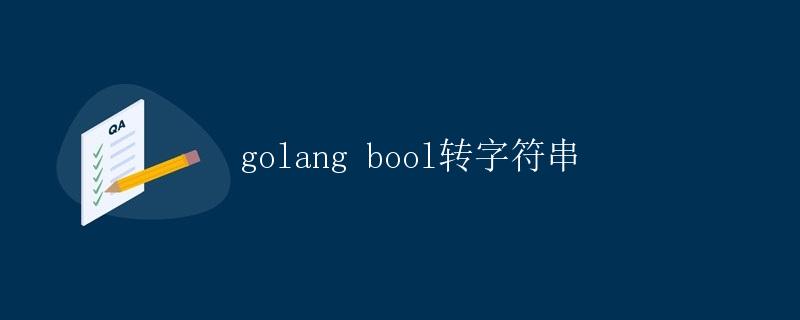Golang bool转字符串

在 Golang 中,bool 类型是表示逻辑真或假的数据类型,有时候我们需要将 bool 类型转换为字符串类型。本文将详细解释如何在 Golang 中将 bool 转换为字符串。
方法一:使用 fmt.Sprintf() 函数
一个简单的方法是使用 fmt.Sprintf() 函数将 bool 值转换为字符串。fmt.Sprintf() 函数是一个格式化输出函数,可以将各种类型的数据格式化为字符串。
下面是一个示例代码:
package main
import (
"fmt"
)
func boolToString(b bool) string {
return fmt.Sprintf("%t", b)
}
func main() {
fmt.Println(boolToString(true)) // Output: true
fmt.Println(boolToString(false)) // Output: false
}
在上面的示例中,我们定义了一个 boolToString() 函数,该函数将一个 bool 值转换为字符串并返回。然后在 main() 函数中调用了 boolToString() 函数,并输出转换后的字符串。
方法二:使用 strconv 包
另一个常用的方法是使用 strconv 包中的 FormatBool() 函数将 bool 值转换为字符串。FormatBool() 函数接收一个 bool 值,并返回其对应的字符串形式。
下面是一个示例代码:
package main
import (
"fmt"
"strconv"
)
func boolToString(b bool) string {
return strconv.FormatBool(b)
}
func main() {
fmt.Println(boolToString(true)) // Output: true
fmt.Println(boolToString(false)) // Output: false
}
在上面的示例中,我们定义了一个 boolToString() 函数,该函数使用 strconv.FormatBool() 函数将 bool 值转换为字符串,并返回结果。然后在 main() 函数中调用了 boolToString() 函数,并输出转换后的字符串。
注意事项
在将 bool 值转换为字符串时,需要注意以下几点:
- 布尔值
true转换为字符串为"true",布尔值false转换为字符串为"false"。 - 在某些情况下,可能需要将 bool 值转换为其他形式的字符串,比如
"1"和"0"。这时可以使用条件语句进行转换。
总的来说,在 Golang 中将 bool 转换为字符串是一件简单的事情,可以使用 fmt.Sprintf() 函数或 strconv.FormatBool() 函数来实现。
 极客教程
极客教程